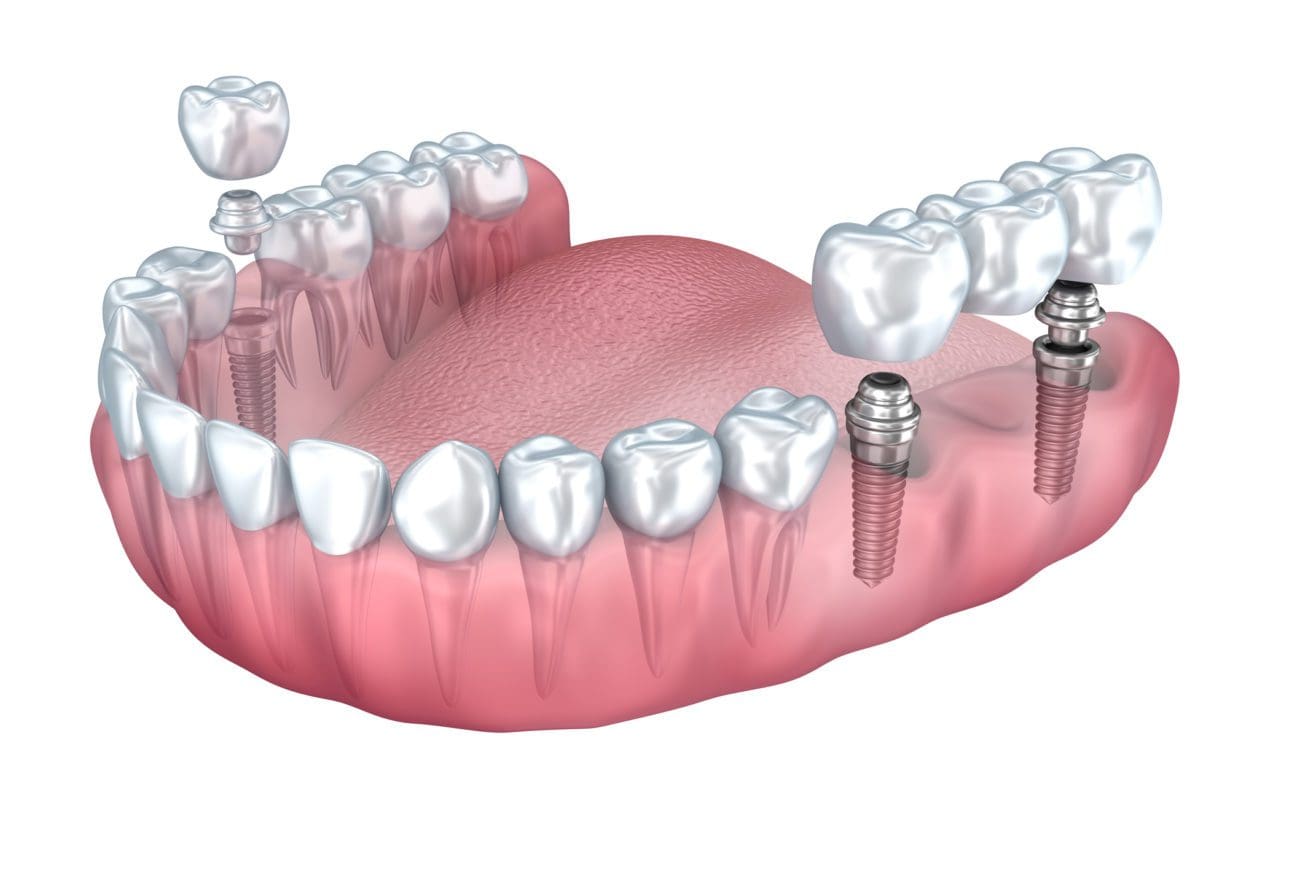Little Known Facts About Dental Sense.
Little Known Facts About Dental Sense.
Blog Article
A Biased View of Dental Sense
Table of Contents9 Simple Techniques For Dental SenseDental Sense Fundamentals ExplainedNot known Details About Dental Sense Dental Sense Can Be Fun For Everyone
are clinical tools operatively implanted into the jaw to bring back a person's ability to eat or their look. They give support for fabricated (phony) teeth, such as crowns, bridges, or dentures. When a tooth is lost as a result of injury or disease, an individual can experience difficulties such as fast bone loss, malfunctioning speech, or changes to chewing patterns that cause pain.Dental implant systems include an oral implant body and dental implant abutment and may additionally include an abutment addiction screw. Dental implant vs bridge. The oral implant body is surgically placed in the jawbone in place of the tooth's origin. The dental implant joint is typically connected to the dental implant body by the abutment fixation screw and expands via periodontals into the mouth to sustain the affixed fabricated teeth
(https://justpaste.it/hj6ob)Framework of The Dental Implant System choosing dental implants, speak to your dental company concerning the possible advantages and dangers, and whether you are a candidate for the procedure. Points to think about: Your general health is an essential variable in figuring out whether you are an excellent prospect for dental implants, for how long it will require to recover, and the length of time the dental implant might remain in location.
Smoking might affect the healing process and lower the long-term success of the implant. The healing process for the implant body may take several months or longer, during which time you usually have a short-lived abutment in area of the tooth. the oral implant treatment: Thoroughly adhere to the oral health guidelines offered to you by your oral company.
Fascination About Dental Sense
Implant failing can result in the requirement for an additional medical treatment to fix or change the dental implant system. Restores the ability to eat Brings back aesthetic look Helps keep the jawbone from shrinking as a result of bone loss Preserves the health of the bordering bone and gums Helps maintain adjacent (nearby) teeth secure Enhances high quality of life Damage to surrounding all-natural teeth during implant positioning Injury to the surrounding tissues during surgical procedure, such as sinus perforation Injury during surgical treatment (as an example, fracture of surrounding jawbone) Poor feature, such as seeming like the teeth do not bite with each other typically An experience that the tooth hangs or twisting in position resulting from a joint screw loosening up Implant body failing (looseness of the implant body) because of systemic infection, which might be more probable in patients with unchecked diabetes because of neighborhood infection in bone and periodontals supporting the dental implant body because of delayed recovery, which might be more probable in clients who smoke Difficulty cleansing the gums around the dental implant, causing inadequate dental hygiene Unattended gum condition Post-surgical numbness as a result of nerve impingement or damage Always notify healthcare suppliers and imaging service technicians that you have dental implants before any magnetic resonance imaging (MRI) or x-ray procedures.
FDA is not familiar with any type of adverse events reported for MRI or x-ray treatments with dental implants. Dental implants systems are typically made of products that follow global agreement requirements of the International Organization for Standardization (ISO) or ASTM International. These standards have information of what makes a risk-free product.

A dental implant is a framework that replaces a missing out on tooth. With screw-like tools, the specialist inserts a dental implant right into the jawbone, and it serves as a support for a synthetic tooth, called a crown. A device called an abutment links the fabricated tooth to the dental implant. The crown is custom-made to fit the individual's mouth and match the color of their teeth.
The Definitive Guide for Dental Sense
Some individuals are not eligible for dental implant surgery. It is for dental doctors to run on people with: severe illnessuncontrollable metabolic diseasebone or soft tissue disease or infectionIf these issues are resolved, an individual can have the surgical procedure. In, oral doctors avoid operating individuals with: If people with any of the above undergo oral implant surgical procedure, there is a greater risk of the dental implant stopping working.

Dental dental implant surgery is an individualized process. It's not the exact same for every person. However the complying with offers a basic summary of what you can anticipate your dental practitioner, dental cosmetic surgeon, periodontist or prosthodontist to do: Place the implant surgically. Offer you time to recover. Attach the post and last crown, bridge or denture.
Next, your specialist will carefully put the oral implant into your jaw. If your implant is near the front of your mouth, your dental expert will make a short-term tooth for you to put on up until you heal.
All about Dental Sense
Your provider can inform you what to expect in your scenario. Throughout the recovery phase, your jawbone needs to fuse to the dental implant. This process, called osseointegration, is crucial for stability and long-term success. This procedure can take anywhere from 3 to nine months. In some instances, it might take much longer.
As soon as your implant heals, your dental expert can connect the abutment (small adapter article) and your final repair (crown, bridge or denture). This generally takes regarding one hour to finish and might need a second minor surgical procedure. You shouldn't really feel any kind of pain during your dental implant procedure since your company will certainly use drug to numb your periodontals.
Report this page